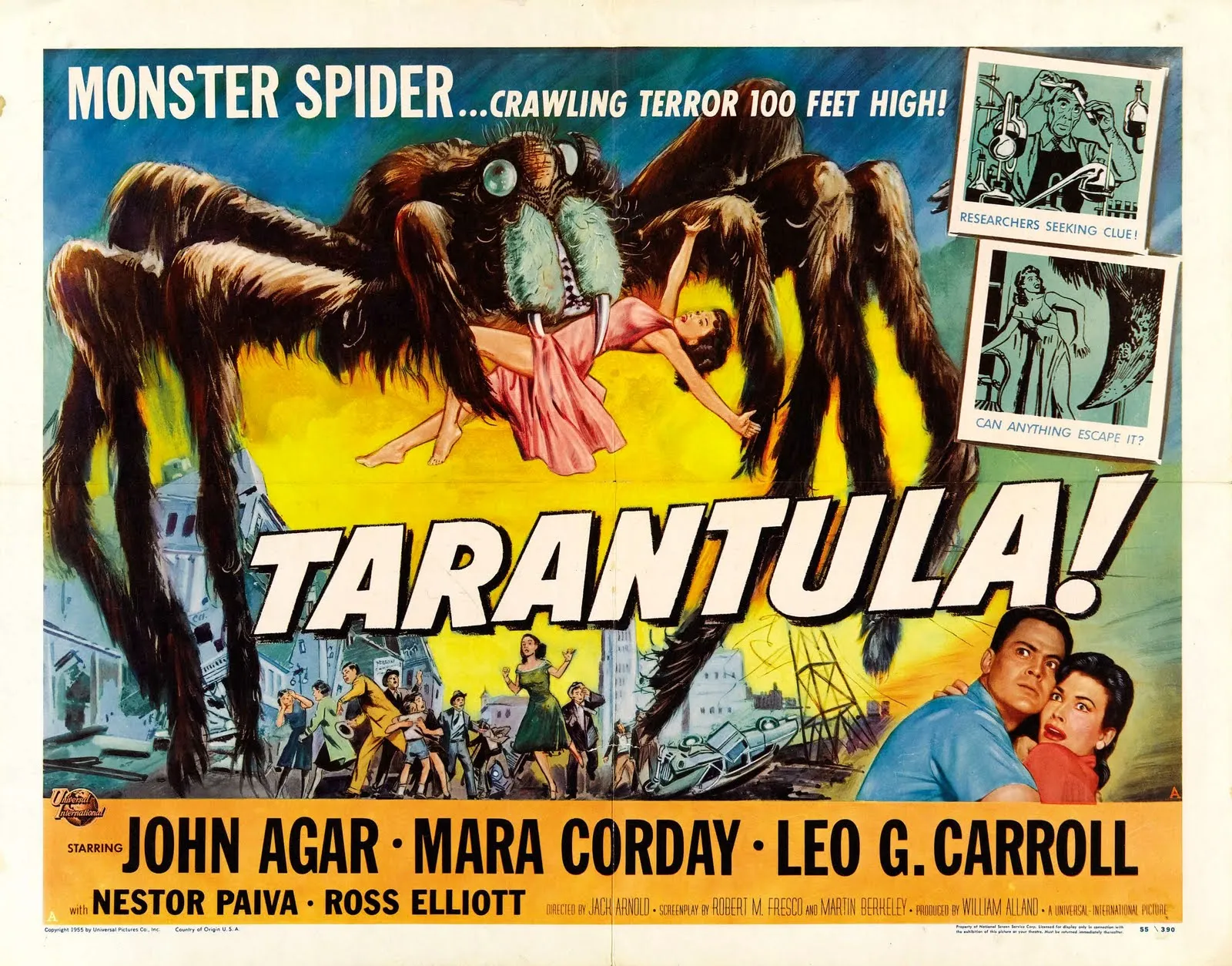The Giant Spider’s Genesis
The 1955 film Tarantula! is a cornerstone of 1950s science fiction cinema, a subgenre that reflected Cold War anxieties and scientific curiosity. This creature feature, directed by Jack Arnold, tapped into the public’s fascination with mutated creatures and the potential dangers of unchecked scientific progress. The movie’s success, and its enduring legacy, can be attributed to its effective blend of suspense, innovative special effects for its time, and a compelling narrative that resonated with audiences. The film’s monster, a gigantic, rampaging tarantula, became an iconic symbol of the era’s fears of the unknown and the potential consequences of nuclear testing and scientific hubris. The film remains a thrilling example of how filmmakers used the monster movie format to explore complex social and scientific themes.
The Birth of a Sci-Fi Icon
The concept of Tarantula! was born from the success of other giant monster movies of the period, capitalizing on the public’s fascination with oversized creatures. The film’s creation was influenced by the growing concerns about radiation and the potential for scientific experiments to go awry. These fears were heightened by the Cold War and the development of nuclear weapons, making giant monsters a physical manifestation of those anxieties. The decision to use a tarantula, a creature both familiar and frightening, was a stroke of genius. Its real-world existence made the threat feel tangible, and the spider’s predatory nature offered ample opportunities for suspenseful and visually striking scenes. The film’s success paved the way for other giant creature features, cementing its place as a foundational text in the sci-fi horror genre.
The Making of the Special Effects
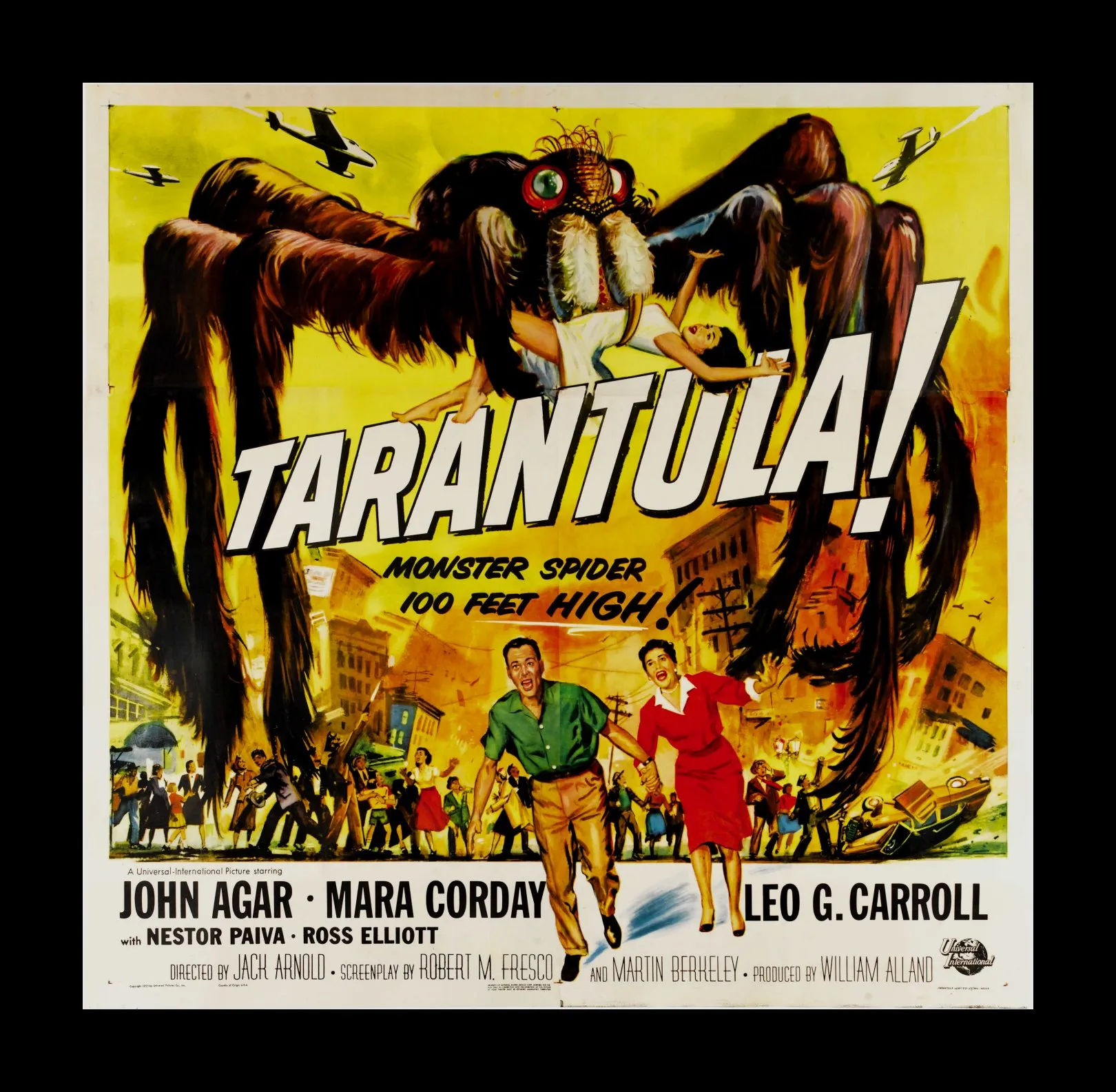
Given the limitations of the technology available in the 1950s, the special effects in Tarantula! are remarkably effective. The filmmakers employed a combination of techniques to bring the giant spider to life, including forced perspective, matte paintings, and the use of a real tarantula. The matte paintings were particularly important for creating the illusion of a massive spider terrorizing towns and landscapes. The use of a real tarantula in close-up shots helped to make the creature feel more realistic and frightening. The film’s special effects are not without their flaws, but they are a testament to the ingenuity of the filmmakers. The practical effects were groundbreaking for the time, and helped to create the film’s atmosphere of dread and suspense. The film’s visual impact continues to resonate with audiences, demonstrating the enduring power of classic special effects.
The Cast and Characters
The success of Tarantula! wasn’t solely dependent on the monster; the film boasted a cast of talented actors who brought depth and believability to the story. The characters, though archetypical of the genre, served to humanize the conflict and underscore the perils of scientific irresponsibility. The cast was carefully chosen to build suspense and to make the audience care about the characters as they faced the giant spider. The performances contributed greatly to the film’s success. The dynamic of the characters allowed for moments of vulnerability, bravery, and resourcefulness, essential in a monster movie of this era. The chemistry between the actors added another layer of tension, immersing the audience in the unfolding drama.
John Agar as Dr Matt Hastings
John Agar plays Dr. Matt Hastings, the film’s hero, a dedicated doctor and scientist who must combat the rampaging tarantula. Agar brought a stoic, yet concerned presence to the role, embodying the qualities of a responsible and intelligent man struggling against a monstrous threat. His performance established the film’s moral center. His performance helped establish the film’s central conflict of man versus nature. Agar’s ability to convey both intelligence and vulnerability contributed significantly to the film’s effectiveness, grounding the fantastical elements in a believable human experience, making the audience root for his survival and success in stopping the spider.
Mara Corday as Stephanie Clayton
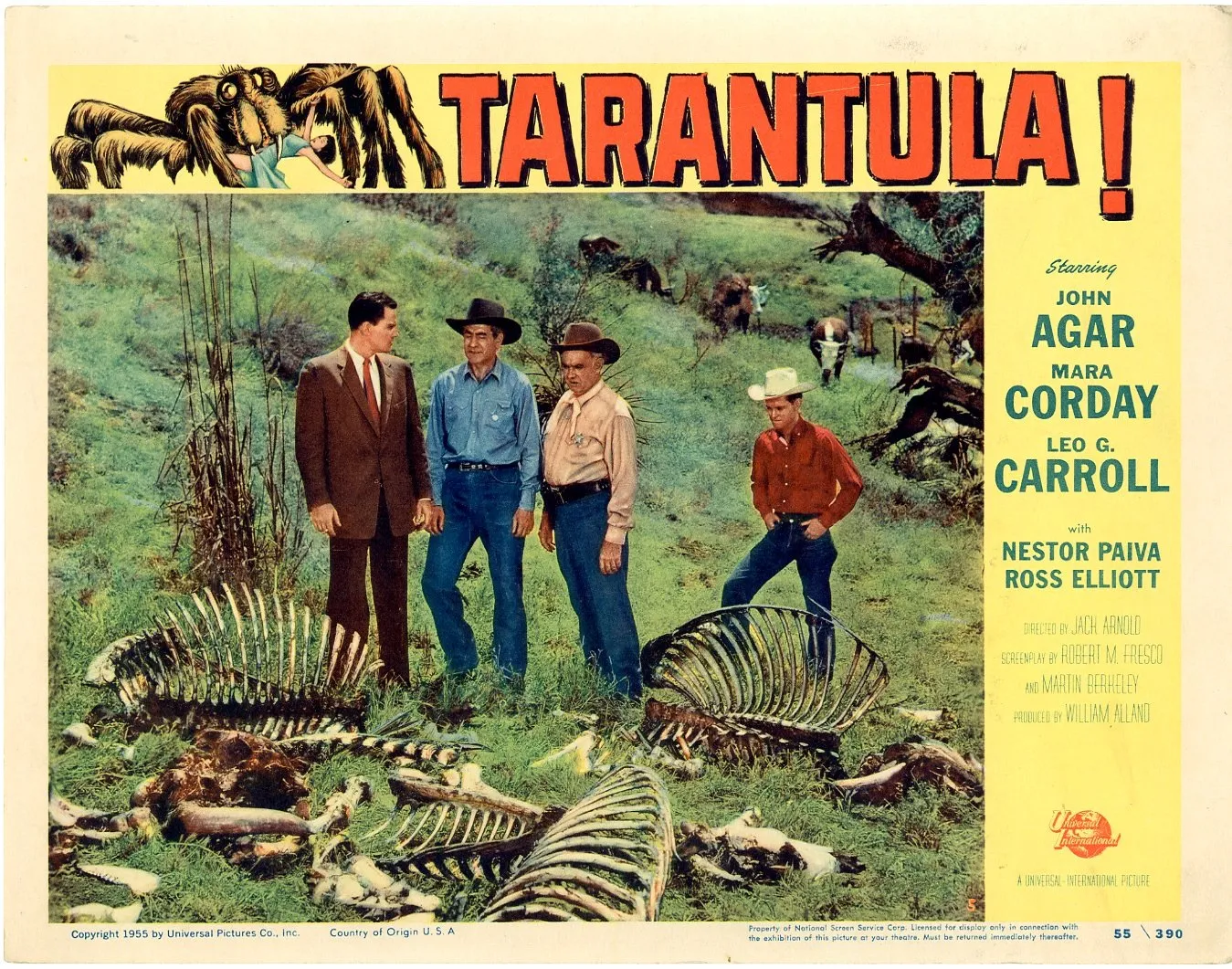
Mara Corday played Stephanie Clayton, a character who brought a romantic interest and a sense of normalcy to the film. Her role allowed for moments of emotional connection, providing the audience with a relatable figure to empathize with. Her character’s presence created a counterpoint to the film’s scientific and monstrous elements, grounding the story in the human experience. Corday’s portrayal of Stephanie provided the audience with emotional investment and the relatable challenges posed by the monstrous creature. Her performance provided depth and added to the film’s overall narrative coherence, balancing the scientific and monster-related aspects.
Leo G Carroll as Professor Gerald Deemer
Leo G Carroll played Professor Gerald Deemer, the scientist whose experimental work unwittingly creates the monstrous tarantula. Carroll’s portrayal of the professor was one of the film’s most nuanced elements, presenting the audience with a complex character who embodies both intelligence and hubris. His performance provided an intellectual counterpoint to the physical threat of the tarantula. Carroll’s nuanced performance also added complexity to the film’s themes about the dangers of scientific ambition and the responsibility that comes with wielding great knowledge. The actor’s portrayal elevated the film beyond a simple monster movie, prompting reflection on the human aspects of scientific responsibility.
The Scientific Accuracy
While Tarantula! is a work of fiction, the film uses a level of scientific terminology and attempts to portray the scientific community. The filmmakers incorporated scientific concepts to create a sense of realism. This inclusion of scientific elements was meant to ground the film and make the fantastical aspects seem more plausible to the audience. However, the film takes considerable liberties with scientific facts. The rapid growth rate of the tarantula, its enormous size, and the means of its destruction are all highly exaggerated for dramatic effect. The film prioritizes entertainment over absolute scientific accuracy, using scientific concepts to enhance the story rather than to provide a faithful representation of biological realities.
The Realism of the Tarantula
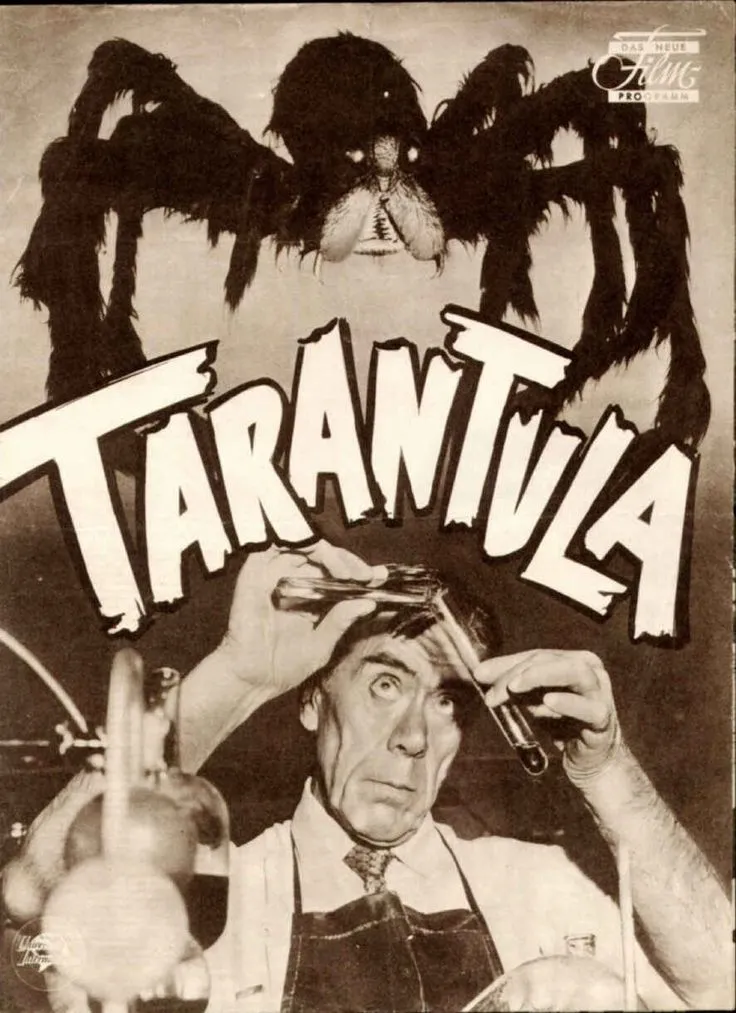
Despite the fantastical elements, Tarantula! benefits from the use of a real-world creature. The tarantula, a spider that many people find unsettling, provides an instant sense of fear and dread. The film’s ability to tap into these primal fears is a key element of its success. The use of an actual tarantula in some shots adds a layer of realism. The film successfully uses close-ups of the real spider. The audience’s ability to relate to the threat, stemming from the real tarantula, is a central part of the movie’s effectiveness, heightening suspense and contributing to a genuinely unsettling experience for viewers.
The Monster’s Growth Rate
One of the most scientifically inaccurate aspects of Tarantula! is the rapid growth rate of the giant spider. The film depicts the tarantula growing at an astonishing pace. In reality, such a rapid increase in size is biologically impossible. This exaggeration is used to create a sense of urgency and heighten the threat posed by the monster. The unrealistic growth rate serves to increase the film’s dramatic tension. The filmmakers sacrifice scientific accuracy for the sake of a more exciting and suspenseful narrative. This allows the tarantula to become a formidable threat in a short period. This pacing helps to keep the audience engaged.
The Movie’s Legacy
Tarantula! has had a lasting impact on popular culture. The film’s influence can be seen in numerous other monster movies. The film set the standard for creature features. Its influence extends beyond the film genre, influencing animation, comic books, and video games. The film’s iconic imagery, such as the giant tarantula attacking, has been referenced and parodied for years. Its legacy is secure in the annals of sci-fi and horror cinema.
Cultural Impact
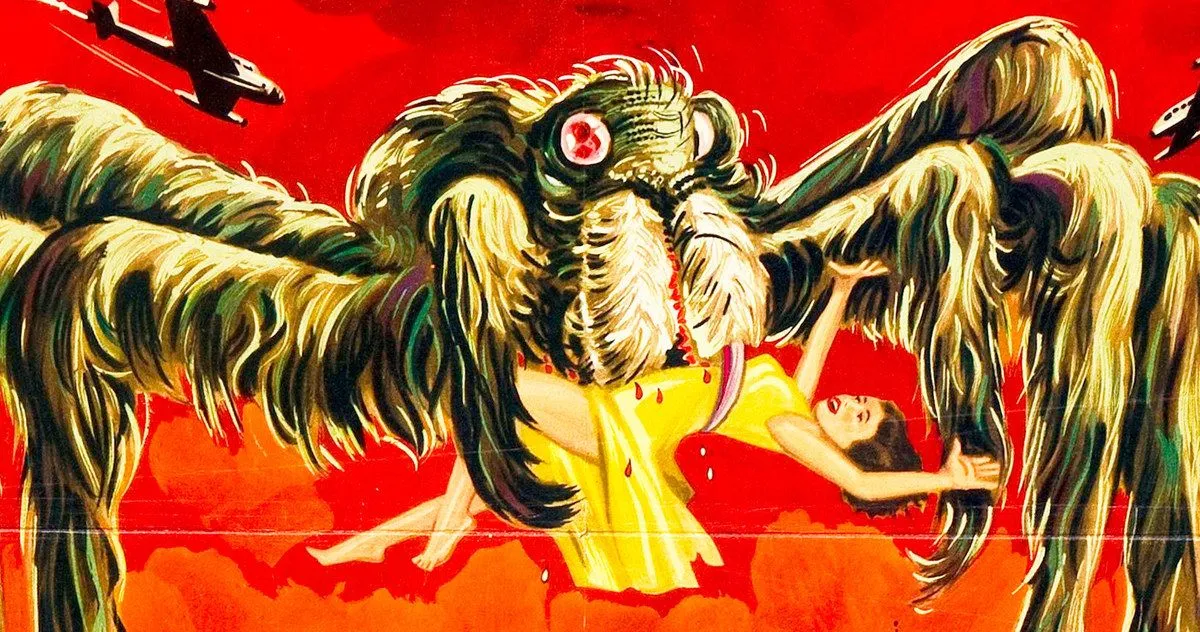
The cultural impact of Tarantula! is significant. The film, a product of the Cold War era, reflected anxieties about scientific progress and nuclear testing. It tapped into the post-war fears that were prevalent in the era. This resulted in the film gaining resonance. It went on to influence other monster movies and helped to shape the genre. The film also became an example of the era’s fascination with the unknown, and the film’s imagery has endured, becoming a recognizable part of the cultural landscape. The film’s depiction of a giant, mutated creature, a fear that many people understood, has had a lasting impression.
Critical Reception
When it was released, Tarantula! received mixed but generally positive reviews. Critics praised the film’s suspenseful atmosphere, innovative special effects, and the performances of the cast. The film’s effectiveness in creating tension was a common point of praise. While some critics pointed out the film’s scientific inaccuracies, they were generally overshadowed by its entertainment value. The film was considered a success at the box office and has since become a cult classic. The film is still highly rated in the sci-fi and horror communities, and continues to be referenced and analyzed by film enthusiasts.
